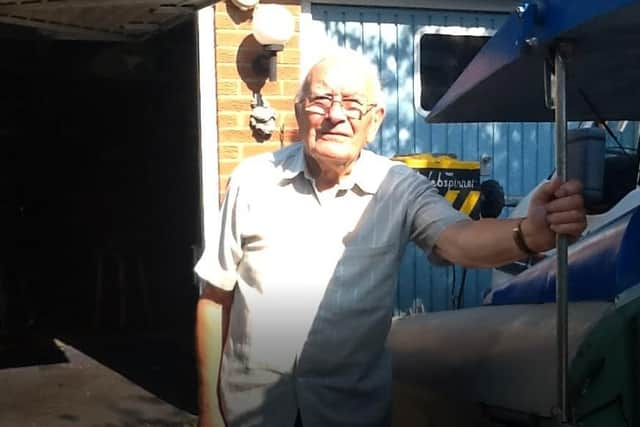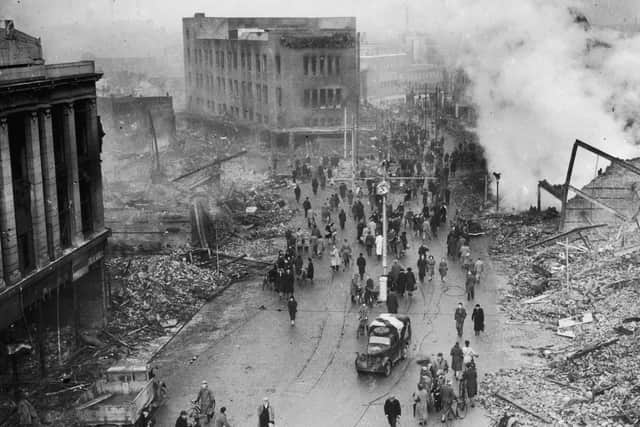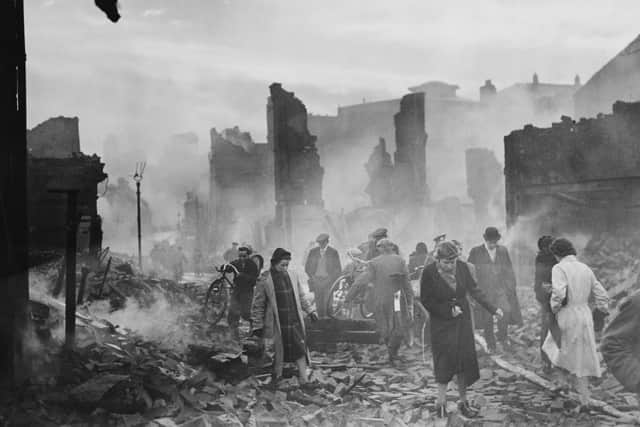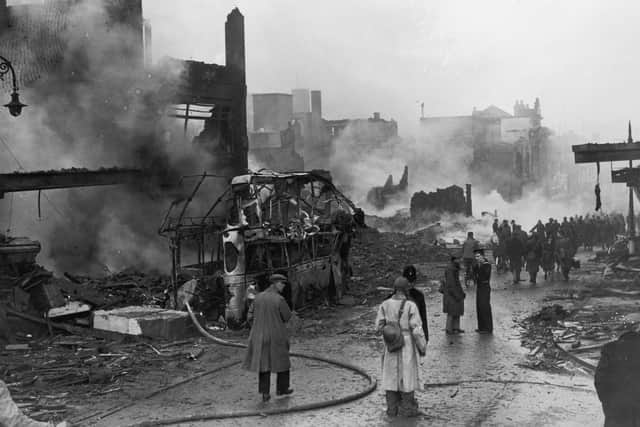"The sounds of those air raids have stayed with me for all of my life": Kenilworth man shares his memories of the Coventry Blitz


A former Kenilworth resident who lived in the town for most of his life has shared his memories of when he was a boy growing up in Coventry during the Blitz.
Fred Fisk, 92 and now of Ashby-de-la-Zouch?, was born in Coventry in 1929 and lived in Kenilworth from 1966 to 2014.
Advertisement
Hide AdAdvertisement
Hide AdEncouraged by his family, he has written down his memories of when the city was infamously ruined by German bombing raids in November 1940.


He contacted The Courier and Kenilworth Weekly News to share what he has named 'a short account of a young boy in the war between 1939 to 1945'.
His account begins with him as a ten-year-old schoolboy with his earliest memories of people in the city being worried about a second world war coming so soon after the first.
He said: "They were very anxious times.
"During the summer of 1939 authorities began building public air raid shelters as the possibility of another war was approaching reality.


Advertisement
Hide AdAdvertisement
Hide Ad"Citizens were buying blackout curtains and sandbags were about to appear on buildings."
Fred said that with several well established factories in the city, which were suitable for the production of war weapons, that there was already a acceptance in the city that it would be a target for aerial attack if war broke out.
He said he remembers on September 3, 1939, his parents sitting and listening anxiously to the radio when Prime Minister Neville Chamberlain announced that Britain and Germany were at war.
And a few days later was among the children getting on buses to be evacuated to the countryside.


Advertisement
Hide AdAdvertisement
Hide AdTo soften the blow, they were given a bar of chocolate - a rare treat due to rationing during the war.
Fred spent 12 months living in Napton and said that the winter between 1939 and 1940 was bitterly cold but that he has many fond memories of playing in the snow around the village and of the kindness of the family with whom he lived - and who he kept in touch with after the war.
He remembers seeing search lights in the sky in the distance from his bedroom window at night.
Due to there being little sign of any air raids on Coventry, Fred was moved back home in September 1940 just a couple of months before the Blitz began and the most serious raid took place on November 14.
Advertisement
Hide AdAdvertisement
Hide AdHe said the Anderson air raid shelters given to many households to be half buried in people's gardens provided good protection but that they could also flood due to them being put too deep below the water table.
He also remembers that, as an alternatives, families were advised to take shelter in under-stairs cupboards and that the one at his house was too small to fit them all in.
He said: "The air raids did create some excitement for me in addition to them being very frightening.
"Along with the whistling sound of the bombs coming down, which were often too close for comfort, I can also remember the different sound of the anti-aircraft guns.
Advertisement
Hide AdAdvertisement
Hide Ad"On the mornings after raids myself and other children would go around collecting shrapnel.
"I would use an old cocoa tin to collect the fragments and I became an expert on knowing the difference between parts of a bomb and a shell."
The day after the devastating Blitz on November 14, Fred's parents decided that it was too risky for him to remain in Coventry and they moved him to live in Yorkshire for about three years.
Coventry station had been badly damaged by the bombing so Fred's dad's had to use the meagre amount of fuel he had in his car drive him to the railway station at Nuneaton.
Advertisement
Hide AdAdvertisement
Hide AdHe lived on the outskirts of Dewsbury near Leeds - another city which was a potential target for German air raids.
But the only 'action' he remembers was a couple of false alarms and one solitary bomb being dropped near the town centre.
He also lived near a military base where anti-aircraft guns were placed and the crews would train by aiming at RAF aircraft which would occasionally fly over.
In the later part of the war, Fred returned to Coventry and joined the air training corps based at Baginton Airfield where he saw Lancaster Bombers take off and land for test flights.
Advertisement
Hide AdAdvertisement
Hide AdHe also saw Mosquitos being transported on the back of lorries from the Standard Motor factory to Ansty Aerodrome for test flights.
Fred said: "Little did I know, 25 years later, that I would get my private pilot's licence at the same place where I saw those Lancaster test flights all those years earlier."
"More recently I was given a very generous gift by my family of going up in a Spitfire which had been converted to a two-seater for training purposes during the war.
"I was given some hands-on experience from the rear seat on the dual controls.
Advertisement
Hide AdAdvertisement
Hide Ad"This particular machine was produced in 1944, used at D-Day and was flown in several successful combat missions
"This is my favourite entry in my old flying log book."
These days, one of Fred's main hobbies is creating aviation art.
He said: "The sounds of those air raids have stayed with me for all of my life.
"It seems like only yesterday when it all happened."
01530 413481